|
Animal Allergies: Flower Essences to the Rescue
Joshua Tree – Flower Essence Profile
Pink Yarrow – Flower Essence Profile
Dr. Laura Cutullo is a professional veterinarian and specialist in homeopathic remedies and flower essence therapy. She has spent over 20 years using flower essences to effectively treat an array of animal conditions. This article will focus on Dr. Laura’s experience with animal allergies and profile two common flower essences used in her practice. When asked how the human companion can best assist the wellbeing of the animal, Dr. Laura had the following advice, “The animal caretaker should actively seek ways to feel better because his or her emotional state will ultimately affect the animal. It is also important to recognize and respect the identity and needs of the animal.”
Animal Allergies: Flower Essences to the Rescue
Specific allergy behaviors are the first thing Dr. Laura considers when determining which flower essences to administer. These behaviors include excessive scratching, biting and asthma. However, she also delves deeper into the psychological context surrounding the allergy in order to choose more specific flowers. Dr. Laura’s flower prescription will most likely be administered for months and change over time. (Consult Table A for a list of Dr. Laura’s top essences.)
Dr. Laura emphasizes the importance of the animal guardian’s active participation with the prescribed healing plan. It is pivotal for the caretaker to recognize changes in behavior, observe allergic triggers, and tune into the emotional needs of his/her animal. These observations from the animal caretaker help Dr. Laura understand the effectiveness of the treatment plan. The goal is for the animal to develop and assert a clear and coherent picture of itself in relation to the world.
Even though the biological intolerance is not likely to disappear entirely, the animal can still have improved quality of life through flower essence treatment with little to no symptoms. When asked if the animal ever recovers from chronic allergy symptoms using flower essence therapy, Dr. Laura responded, “ Of course it does, the results you get are much better than any other type of allopathic treatment.”
The dosage is the same for all animals, regardless of size or age: 4 drops 3-4 times per day. In cases of allergic dermatitis, the flower remedy can be used for washing the afflicted parts of the body. Other top flower essence application sites Dr. Laura recommends are the ears, nose and snout area.
Even though the allergy is deeply rooted in the animal’s emotional level, these quick tips can help create an allergen free home for your animal!
Joshua Tree – Breaking inner genetic ties passed down through breeding We at FES were intrigued to hear about Dr. Laura’s use of Joshua Tree essence for animal allergies. When we asked her to elaborate on her findings, we found out Joshua Tree not only helps mitigate allergic reactions in Dr. Laura’s practice, but has been used to effectively balance out strong genetic tendencies in some animals. The Joshua Tree essence is especially useful for strong genetic breeds – for example, Rottweilers, Border Collies, pure bred animals and birds. Dr. Laura uses this essence to interrupt the shaping forces of breed selection. She believes the suffering of the Joshua Tree animal is caused by a disconnect between the instinctual behavior bred into the animal and the current living situation. For example, a Sheep Dog is bred to herd and will often times nip at the feet of its human companions. Without breaking the energetic mapping of this instinct, the Sheep Dog will not feel fulfilled and purposeful in an apartment setting. Joshua Tree essence helps get around the genetic short circuit and works to break the connection to instinctual urges on a Soul level. This allows the animal to become present in its current living environment without being bombarded by genetic urges.
Joshua Tree essence is also useful for litters of kittens or puppies that are all exhibiting a disease or emotional disturbance. The disease or behavior issue does not have to be the identical for the entire litter, and often each baby animal will express the genetic disturbance in a unique way. This situation implies a family genetic component is at play. In this instance, Dr. Laura has found that Joshua Tree works to break the ‘ener-genetic’ ties that are passed down from the breeding process.
Pink Yarrow – Used for the sponge effect in animal behavior Most people familiar with flower essence therapy have encountered Pink Yarrow and understand its benefits for those with unbalanced sympathetic forces. Interestingly enough, Dr. Laura has found this same essence can be used to help animals establish boundaries with its environment, especially between the animal and its human guardian.
Dr. Laura refers to the Pink Yarrow animal condition as the “sponge effect” because the animal acts like an emotional sponge and soaks up the emotions of its animal caretaker. This again drives home Dr. Laura’s message about the importance of the animal guardian to work on his or her state of mind. She finds the caretaker of the Pink Yarrow animal will often exhibit extreme worry over the welfare of the animal and be emotionally upset during the entire exam. Most times Dr. Laura notes the human will even resemble the animal physically! All of these factors are signals that the animal is likely in need of Pink Yarrow.
Out of all types of animals, Dr. Laura prescribes Pink Yarrow essence most often for cats. She says this is due to cats’ predatory instinct which enables them to observe their human companions more closely. This puts cats at high risk of becoming an emotional sponge to their human partners. Cats read people better and notice human behavior with a greater sensitivity then dogs. Ideally, Dr. Laura hopes both animal and caretaker will take Pink Yarrow in order to define a healthy and freeing emotional space.
Each animal Dr. Laura evaluates gets an individualized treatment plan and a lot of love! Below is a quick outline of what to expect from an appointment.
After this comprehensive approach, Dr. Laura will prepare a flower essence dosage bottle, along with other herbal and homeopathic remedies as needed. Each case is individual, but Dr. Laura will typically include one to seven flowers in the dosage bottle.
Read another article about Dr. Laura Cutullo and her work with animals. |

To install this Web App in your iPhone/iPad press ![]() and then Add to Home Screen.
and then Add to Home Screen.
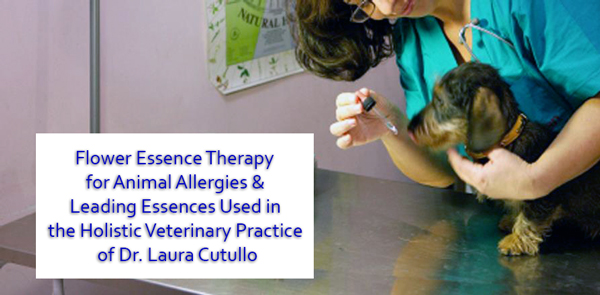
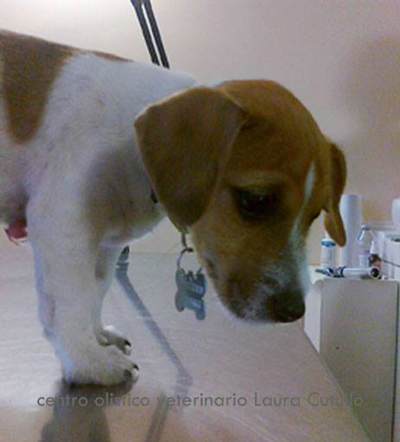
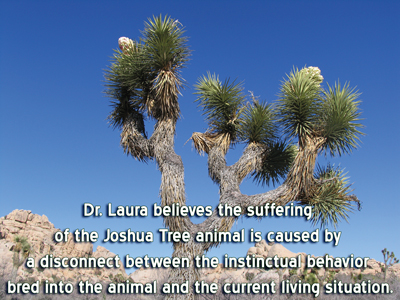
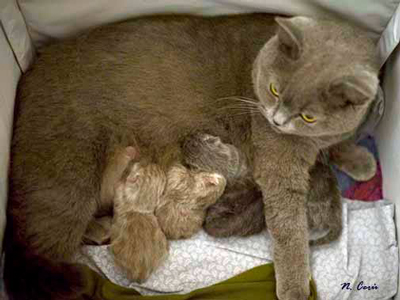
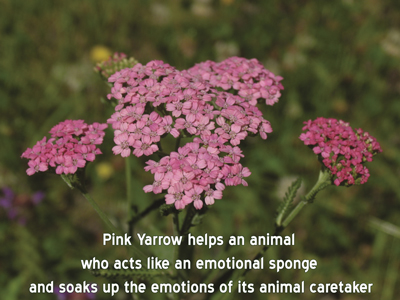
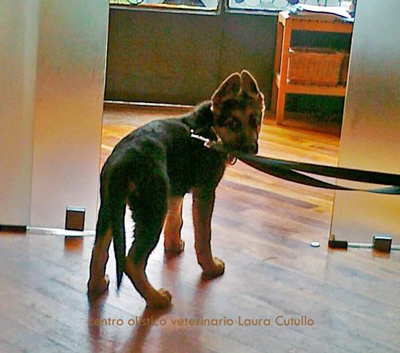
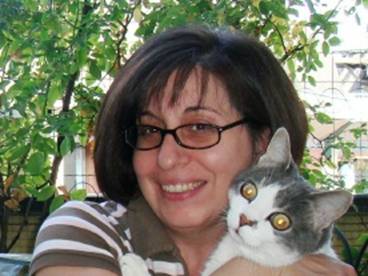 Dr. Laura’s involvement in veterinary medicine began in 1991. After graduating in Veterinary Medicine at the State University of Milan, Italy, she began her studies in homeopathy attending a 4 year post-graduate course at the Classic Homeopathy School “Mario Garlasco” in Florence, Italy. During this same period of time, Laura developed a deep interest in Bach flower remedies which affected her future professional activity. She contributes to scientific as well as to more popular publications with a particular focus on holistic medicine and natural therapies, her major areas of interest. In 1997, Laura published the first Italian book of Bach Flower Remedies for pets, "Fiori di Bach per gli animali" (published by Xenia, Cod: ISBN 978-88-7273-240-3). In this book, for the first time, Flower Therapy was studied with special regard to its application to pets’ care, particularly dogs and cats. Together with Paul Pignattelli, MD, Laura has contributed to the book "Medicina veterinaria non convenzionale" (Unconventional veterinary medicine) (published in Italy by Edagricole) writing the chapter devoted to Flower Therapy. In 2011, Laura Cutullo published the book of holistic care for pets, "Cure naturali e alimentazione per gli animali di casa” (published by RIZA, Cod: ISBN 978-88-7071-160-8). Since 2002, Laura has been one of the contributors to the magazine "Salute Naturale" (Natural Health). Teacher of Veterinary Flower Therapy at the 3-year School of Flower Therapy (UF and Riza) in Milan, Laura has also taught post-graduate courses. Since 1991, Laura has been carrying out her holistic veterinary practice in Milan, with particular attention to pets’ care. Visit her website:
Dr. Laura’s involvement in veterinary medicine began in 1991. After graduating in Veterinary Medicine at the State University of Milan, Italy, she began her studies in homeopathy attending a 4 year post-graduate course at the Classic Homeopathy School “Mario Garlasco” in Florence, Italy. During this same period of time, Laura developed a deep interest in Bach flower remedies which affected her future professional activity. She contributes to scientific as well as to more popular publications with a particular focus on holistic medicine and natural therapies, her major areas of interest. In 1997, Laura published the first Italian book of Bach Flower Remedies for pets, "Fiori di Bach per gli animali" (published by Xenia, Cod: ISBN 978-88-7273-240-3). In this book, for the first time, Flower Therapy was studied with special regard to its application to pets’ care, particularly dogs and cats. Together with Paul Pignattelli, MD, Laura has contributed to the book "Medicina veterinaria non convenzionale" (Unconventional veterinary medicine) (published in Italy by Edagricole) writing the chapter devoted to Flower Therapy. In 2011, Laura Cutullo published the book of holistic care for pets, "Cure naturali e alimentazione per gli animali di casa” (published by RIZA, Cod: ISBN 978-88-7071-160-8). Since 2002, Laura has been one of the contributors to the magazine "Salute Naturale" (Natural Health). Teacher of Veterinary Flower Therapy at the 3-year School of Flower Therapy (UF and Riza) in Milan, Laura has also taught post-graduate courses. Since 1991, Laura has been carrying out her holistic veterinary practice in Milan, with particular attention to pets’ care. Visit her website:
